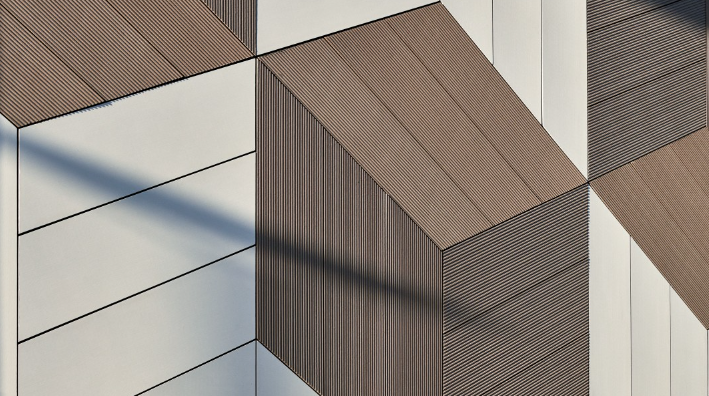Art and Architecture: Blurring Lines Between Functionality and Aesthetic Expression

Introduction
Art and architecture have long been intertwined, each influencing the other in profound ways. While architecture primarily serves functional purposes, it is also a form of artistic expression. This article explores the dynamic relationship between functionality and aesthetics in architecture, highlighting how these two elements often intersect and complement each other.
Historical Context
Throughout history, art and architecture have evolved hand in hand. Ancient civilizations, such as the Egyptians and Greeks, integrated artistic motifs and sculptures into their architectural designs, creating visually striking structures that also served practical purposes. As societies progressed, architectural styles became more elaborate, with aesthetics playing an increasingly significant role.
Functionality in Architecture
Functionality is a cornerstone of architectural design, ensuring that buildings serve their intended purposes efficiently and effectively. Functional architecture prioritizes practicality and usability, focusing on elements such as spatial layout, structural stability, and building materials. Examples of functional architecture include skyscrapers, bridges, and residential homes, where design is dictated by factors such as safety, comfort, and convenience.
Aesthetic Expression in Architecture
While functionality is crucial, aesthetics also play a pivotal role in architectural design. Aesthetically expressive architecture aims to evoke emotion, provoke thought, and stimulate the senses. Architects often draw inspiration from art movements, such as surrealism, cubism, and minimalism, incorporating artistic principles into their designs. Buildings designed for aesthetic appeal may feature innovative shapes, intricate ornamentation, and captivating visual effects, transcending mere utilitarianism to become works of art in their own right.
Intersection of Art and Architecture
The distinction between art and architecture has become increasingly blurred, with architects drawing inspiration from various artistic disciplines. Architectural movements such as Art Nouveau, Bauhaus, and Postmodernism reflect this fusion of art and architecture, incorporating artistic elements into built environments. Artistic influences can be seen in architectural forms, patterns, and motifs, as well as in the use of unconventional materials and techniques.
Landscape Art
Landscape art, a genre that has long captivated artists and viewers alike, also holds a profound influence on architectural aesthetics. Architects often draw inspiration from the natural world, incorporating elements of landscape art into their designs to create harmonious environments that blend seamlessly with their surroundings. Whether it’s the sweeping curves of a building’s façade mirroring the undulating hills of a countryside or the strategic placement of windows to frame breathtaking vistas, landscape art informs architectural decisions in subtle yet impactful ways.
Skull Art
On the other end of the spectrum, skull art represents a more unconventional yet increasingly prevalent influence on contemporary architecture. Emerging as a symbol of rebellion, mortality, and human anatomy, skull art has found its way into architectural expressions, challenging traditional notions of beauty and form. Architects experiment with skull motifs in various forms, from intricate carvings adorning building exteriors to bold sculptural installations within interior spaces.
Case Studies
Numerous examples illustrate the seamless integration of art and architecture. The Guggenheim Museum in Bilbao, designed by Frank Gehry, is renowned for its striking sculptural form and innovative use of materials. The Sydney Opera House, designed by Jørn Utzon, is another iconic structure that blurs the line between architecture and sculpture, with its sweeping sail-like roof and expressive silhouette.
Challenges and Controversies
While the merging of functionality and aesthetics has led to groundbreaking architectural innovations, it has also sparked debates and controversies. Critics argue that prioritizing aesthetics over functionality can lead to impractical and unsustainable designs, while others believe that artistic expression should be paramount. Additionally, cultural and societal considerations often influence architectural choices, raising questions about the role of architecture in shaping identity and community.
Future Trends
As technology advances and environmental concerns mount, the future of art and architecture is poised for further evolution. Architects are increasingly incorporating sustainable practices and materials into their designs, prioritizing environmental stewardship alongside aesthetic considerations. Innovations such as 3D printing, augmented reality, and parametric design are revolutionizing the way buildings are conceived and constructed, opening up new possibilities for artistic expression and functionality.
Conclusion
Art and architecture have always been inextricably linked, with each informing and enriching the other. As we continue to push the boundaries of design and creativity, the distinction between art and architecture will likely become even more blurred. By embracing the dynamic interplay between functionality and aesthetics, architects can create spaces that not only serve practical needs but also inspire and uplift the human spirit.
FAQs
How do architects balance functionality and aesthetics in their designs?
Architects strive to strike a delicate balance between functionality and aesthetics by carefully considering the practical needs of a building’s occupants while also incorporating elements of beauty and visual appeal into the design.
What role does cultural context play in shaping architectural aesthetics?
Cultural context plays a significant role in shaping architectural aesthetics as it influences the design preferences, materials used, and architectural styles prevalent in a particular region or community.
Can sustainable architecture also be aesthetically pleasing?
Yes, sustainable architecture can definitely be aesthetically pleasing. In fact, many architects are now prioritizing sustainability in their designs, incorporating features such as passive heating and cooling.
Are there any examples of functional architecture that also serves as art installations?5
Yes, there are numerous examples of functional architecture that also double as art installations. For instance, the Eiffel Tower in Paris, initially constructed as a monument for the 1889 World’s Fair, is not only a marvel of engineering but also a symbol of artistic expression.
How do advancements in technology influence the future of architectural design?
Advancements in technology are revolutionizing the field of architectural design, offering architects new tools and techniques to explore innovative ideas and push the boundaries of creativity.





